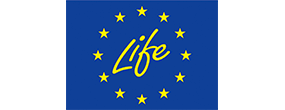Overview
In 2022, final energy consumption in France reached 136 Mtoe, 7% below its 2000 level, while GDP increased by 30%. The transport sector, the largest share of final energy consumption since 2000, accounted for 33% of the total in 2022. The residential sector’s consumption decreased by 3% between 2000 and 2022. The final consumption of the service sector decreased to reach 20.8 Mtoe in 2022, or 15% of the total. The largest change is in the industry’s final energy consumption, which decreased by 1% per year between 2000 and 2022, while still representing 19% of the total in 2022. Agriculture’s energy consumption has increased by 10% between 2000 and 2022.
Figure 1: Final energy consumption by sector (with climatic corrections)
Source: ODYSSEEEnergy efficiency, as measured by ODEX (an indicator which aggregates the energy efficiency progress for all sectors and end-uses), improved by an average of 1.3%/year or 24% from 2000 to 2022. The residential sector achieved the largest gains (1.9%/year). The service and transport sectors are 20% more efficient in 2022 than in 2000. After seeing massive improvements in the early 2000s, energy efficiency gains in the industry stagnated between 2009 and 2015 before improving by 0.9% per year until 2022.
Figure 2: Technical Energy Efficiency Index
Source: ODYSSEEEnergy efficiency is a central principle in the French low-carbon transition. The Energy Transition Act of 2015 introduced a provision aimed to halve final energy consumption between 2012 and 2050. The Multiannual Energy Programming and the National Low-Carbon Strategy are the key planning documents outlining the roadmap for achieving energy efficiency targets both in the short and long term. In 2014, to comply with the Energy Efficiency Directive, France adopted its third National Energy Efficiency Action Plan (NEEAP) setting a final consumption target of 131 Mtoe in 2020, which was reached with the Covid-19 pandemic being likely responsible for the drop in energy consumption. The 2024 National Energy and Climate Plan, sets a target of 30% reduction in final energy consumption in 2030 compared to 2012, to reach 107 Mtoe of final energy consumption in 2030 or a 21% lower than 2022 level. The two main cross-cutting measures enabling France to reach its energy savings target are: i) the Heat Fund, and ii) the Energy Saving Certificates scheme, setting a 3100 TWhc savings target for the 5th period (2022-2025), 45% higher than the 4th period’s target. In addition, the French government realised 2 energy sufficiency plans in 2022 and 2023.
Table 1: Sample of cross-cutting measures
| Measures | NECP measures | Description | Expected savings, impact evaluation | More information available |
|---|---|---|---|---|
| Energy Saving Certificates (ESC) | Yes | The ESC scheme requires energy retailers and fuel suppliers to achieve specific energy savings. Obligated parties fulfil these targets by encouraging their customers, primarily in the building sector, to reduce energy consumption. On top of energy saving actions, the certificates can also be delivered for the deployment of energy efficiency programmes. It is the only measure reported to the EED regarding final energy consumption target under Article 8. | 830.5 PJ | Link |
| Heat Fund | Yes | The Heat Fund supports the production of heat from renewable energies, such as the development of the use of biomass (forestry, agricultural, biogas, etc.), geothermal energy (through direct use or by means of heat pumps), solar, thermal energy, recovered energies, as well as the networks linked to these energies. | Link |
Buildings
In the residential sector, final energy consumption reached its lowest level since 2000, likely impacted by the energy crisis. In 2022, space heating accounted for 69% of the sector’s consumption, electrical appliances for 16%, water heating for 10% and cooking for 5%. Energy consumption per m2 for space heating has decreased by 29% over the period (-1.5%/year). Besides, the consumption of electrical appliances and lighting per dwelling increased by 8% between 2000 and 2022. This can be attributed to the growing number connected devices per households. In the meantime, energy consumption for water heating, cooking and all other end-uses remained almost stable around 0.23 toe/dw between 2000 and 2021, while it dropped by 13% to 0.20 toe/dw in 2022.
Figure 3: Energy consumption of household space heating per m² (with climatic corrections)
Source: ODYSSEE; ambient heat included.Figure 4: Energy consumption per dwelling by end-use (except space heating)
Source: ODYSSEEThe final energy consumption of households was 3.2 Mtoe lower in 2022 than in 2000. Several factors contributed to the increase this consumption : the number of dwellings (“more dwellings”)(+9.2 Mtoe), the equipment ownership rate (“more appliances per dwelling")(+4.4 Mtoe) and the larger size of dwellings (+1.4 Mtoe). However, energy savings largely offset the effect of these socio-economical drivers and reduced the residential sector's energy consumption by 18.4 Mtoe. The climate was milder in 2022 leading to a decrease in energy consumption (-2.4 Mtoe). The others effect combined two opposite effects: the higher consumption of ambient heat (+3.4 Mtoe) and changes of behaviour driven in 2022 by higher energy prices (+13%) .
Figure 5: Main drivers of the energy consumption variation in households
Source: ODYSSEE; ambient heat included.In the service sector, the total energy consumption per m² has decreased by 0.4%/year since 2000. However, until 2010, electricity consumption was increasing by 2%/year, driven by the widespread adoption of IT and electrical appliances, despite improvements in their efficiency. In the second half of the period, the electricity consumption has been decreasing, returning to its 2000 level.
Figure 6: Energy and electricity consumption per m² in services (with climatic corrections)
Source: ODYSSEEIn France, building codes are key measures to improve energy efficiency in buildings. The last update (RE2020) is particularly ambitious with a maximum consumption of 100 kWh/m2 for all end-uses. Still, three quarters of the current building stock was built without building codes. As a result, and despite the great efforts made since year 2000, the average performance of the building stock in terms of energy consumption per m² is one of the worst in Europe. Hence, to bring down energy consumption to a BBC level for the full building stock by 2050 (Ecological Transition Law), the government has set ambitious targets, such as the retrofitting of 500,000 existing dwellings each year. The Energy and Climate Act of 2019 also sets a new target to renovate all the “thermal sieves” within 10 years. To support thermal renovation in the residential sector, around €5.6 billion were invested by the government in “MaPrimeRénov’”, a state subsidy scheme. Furthermore, around 68% of the services sector’s building stock is now subjected to the Éco Énergie Tertiaire rule, which requires a 60% reduction in final energy consumption by 2050 compared to 2010 levels.
Table 2: Sample of policies and measures implemented in the building sector
| Measures | NECP measures | Description | Expected savings, impact evaluation | More information available |
|---|---|---|---|---|
| Building code of 2020 (RE 2020) | Yes | Requires all new buildings to produce more energy than it consumes based on the principle of positive energy buildings (PEB), (i.e., new residential buildings are required to have a primary energy consumption lower than a threshold 100 kWh/m²/year of all end-uses, varying by climate zone). | Link | |
| Éco-Énergie Tertiaire | Yes | Regulatory obligation imposing a 40% reduction in the services sector’s final energy consumption by 2030. Building owners also have a reporting obligation to measure progress. | Link | |
| Subsidy for thermal renovation of private dwellings “MaPrimeRénov’” | Yes | State subsidy accessible to all owners of a main residence to finance insulation, efficient heating and ventilation systems or energy audit works. The level of the aid (up to 20k€/dwelling) depends on the household’s income and can be improved for work on very poorly insulated dwellings. | Link |
Transport
Consumption of the transport sector has decreased by 5% since 2000. Road transport accounted for for 93% of the total in 2022, 57% of which can be attributed to cars. The remaining was split among rail (2.1%), domestic air transport (3.9%), and inland waterways (1.3%).
Figure 7: Transport energy consumption by mode
Source: ODYSSEEPassenger traffic has been increasing by 19% between 2000 and 2022. Trains have seen the largest increase with 43% more passengers in 2022. Bus traffic has not returned to its pre-pandemic level and ridership is down 5% since 2000. The share of public transport has slightly increased since 2000 (+0.8 pp). Overall, cars account for the largest share of traffic with 82.5% in 2022 of land transport (i.e. excluding air).
Figure 8: Modal split of inland passenger traffic
Source: ODYSSEEWhile passenger traffic remains steadier, goods traffic is more impacted by economic cycles. Over the long term, goods traffic (ton-kilometre) increased by only 3% from 2000 to 2022. The share of rail (-7 pp) and waterways traffic (-1 pp) declined, resulting in road traffic accounting for 87% in 2022 (+8 pp).
Figure 9: Modal split of inland freight traffic
Source: ODYSSEETransport energy consumption was 0.4 Mtoe lower in 2022 than in 2000. The growth in traffic (+5.7 Mtoe) was more than compensated by energy savings (-8 Mtoe). Modal shifts had a negligeable effect, as the shift to more efficient modes for passenger transport was counterbalanced by a reverse trend for freight. Gains in energy efficiency might also be compensated by inefficient use of transportation, such as a low load factor (+1.9 Mtoe captured in “Others”).
Figure 10: Main drivers of the energy consumption variation in transport
Source: ODYSSEEEnergy efficiency policies in the transport sector, are geared towards the compete decarbonization of the sector by 2050. They are mainly based on two points: i) Support for low emission modes of transport (modal shift); ii) Increase the penetration of efficient modes of transportation. Financial and fiscal incentives are used to encourage modal shift towards less energy-intensive means of transportation. Key measures include the ecological bonus-malus scheme (Bonus écologique) for new cars that is regularly revised, but also sustainable mobility allowances provided by companies to their employees to encourage modal shift. Energy efficiency measures are also driven by European directives setting mandatory standards for emissions from new vehicles, with the latest directive 2019/631/EC setting emissions targets for 2025 and 2030.
Table 3: Sample of policies and measures implemented in the transport sector
| Measures | NECP measures | Description | Expected savings, impact evaluation | More information available |
|---|---|---|---|---|
| Bonus-malus scheme for new vehicle purchases | Yes | The bonus-malus scheme (called bonus écologique), based on the CO2 emissions per km, supports the purchase of vehicles with low CO2 emissions by giving bonus (up to €4,000) and penalizes the purchase of high emissions vehicles (more than 118gCO2/km in 2024) and heavy vehicles (1.6t) by giving a malus, respectively up to €60,000 (for cars with emissions higher than 193gCO2/km) and €30/kg(for cars heavier than 2.1t). | Link | |
| Electric leasing | Yes | Subsidised leasing scheme to support low-income households access to electric cars. The first year of the scheme enabled 50,000 households to lease for around 100€/month. | Link | |
| Low Emission Zones | Yes | Low Emission Zones (Zones à Faibles Emissions, ZFE) are put in place by local authorities as a way to reduce air pollution in dense areas. These ZFEs are zones where the local authorities can restrict or limit traffic for certain vehicles based on their pollutants emissions levels. | Link |
Industry
Industry’s final energy consumption decreased by 1.1%/year on average between 2000 and 2022, to end up at 25 Mtoe. Over half of the sector’s consumption remains concentrated in 5 energy intensive branches; 21% is consumed by the chemical industry, 15% by non-metallic minerals, 9% by paper, pulp and printing, 7% by steel, and 3% by non-ferrous metals. The consumption of chemicals and non-metallic minerals went back to their 2000 level, while the other intensive branches have seen their consumption decrease.
Figure 11: Final energy consumption of industry by branch
Source: ODYSSEEUnit consumption of energy-intensive products is an indicator of the energy efficiency progress. Steel unit consumption increased by 2% between 2000 and 2022. However, it has decreased since 2007 where unit consumption was 12% higher than in 2000. Cement and paper both have a lower unit consumption in 2022 than in 2000. Energy consumption by ton of paper produced decreased by 7% and by 10% per ton of cement.
Figure 12: Unit consumption of energy‐intensive products (toe/t)
Source: ODYSSEESince 2000, final energy consumption in the industrial sector contracted by 7 Mtoe. This can be explained by the drop in industrial activity (-2.4 Mtoe), structural changes towards less energy-intensive branches (-2.5 Mtoe) and mainly by energy savings (-6 Mtoe). This reduction in energy consumption is partly offset by other effects (+4.1 Mtoe), including structural changes within industrial branches and inefficiencies arising from the underutilization of production capacity.
Figure 13: Main drivers of the energy consumption variation in industry
Source: ODYSSEEFrench energy efficiency policies for the industry mainly rely on market instruments such as the EU-ETS and the Energy Savings Certificates scheme, which is going to be extended to all entities submitted to the EU-ETS in 2024 as an experiment. Regulatory measures are requiring mandatory energy audits every four years, under the transposition of the Energy Efficiency Directive (2012/27/EU). In 2020 the French Government adopted the France 2030 plan that directs €5.6Md of subsidies towards industrial decarbonisation, which complement other financial incentives targeting energy efficiency and low-carbon industrial heat, also supported by ADEME’s Heat Fund. Financing instruments are also available to help industries comply with energy efficiency regulation, such as targeted loans for SMEs or investment subsidies.
Table 4: Sample of policies and measures implemented in the industry sector
| Measures | NECP measures | Description | Expected savings, impact evaluation | More information available |
|---|---|---|---|---|
| Recovery Plan - National Low-carbon strategy – Funds for industry Decarbonization - Energy efficiency component | Yes | The aim of decarbonizing industry is to support industrial companies in investing in equipment and processes that emit less CO2. The aid covers industrial investments in the areas of energy efficiency, electrification and process adaptation that reduce CO2 emissions. | 5.69 PJ | Link |
| Support Programme for the Energy Transition of the Industry (PACTE Industrie) | Yes | The purpose of this programme managed by ADEME is to support industrials throughout their decarbonization and energy transition plan with tailored trainings and accompaniment services. | 1.12 PJ | Link |





